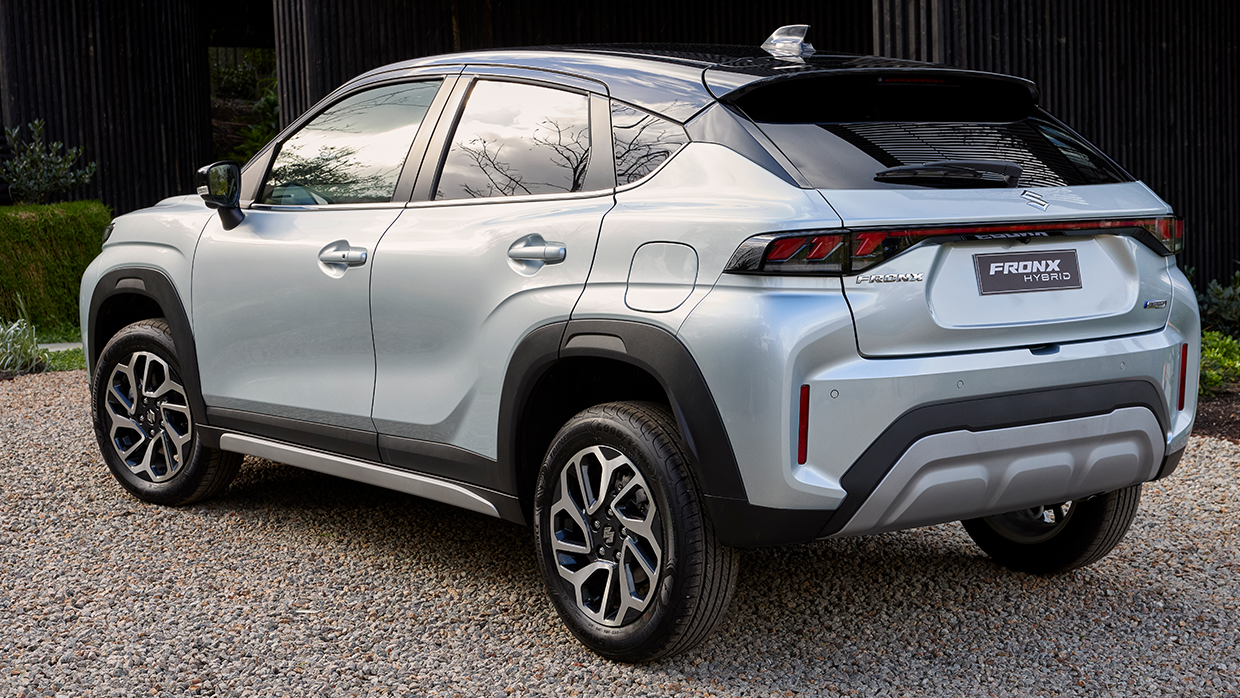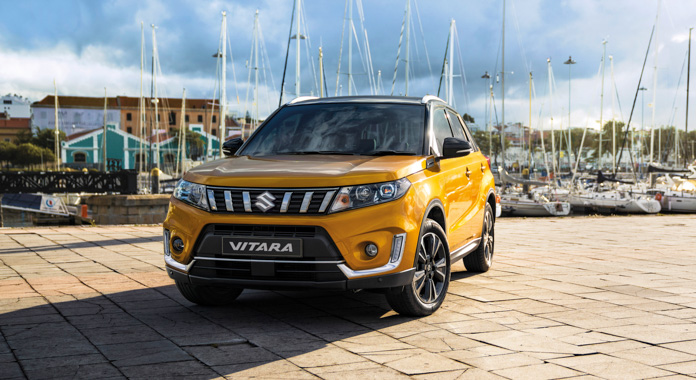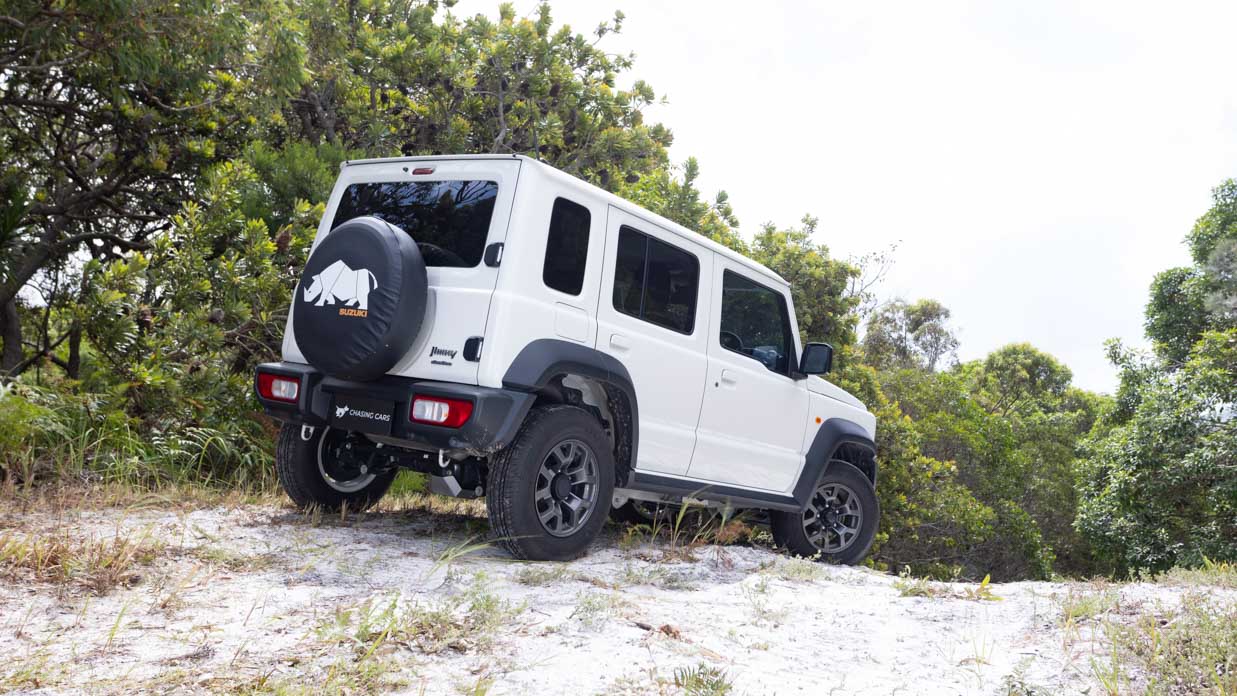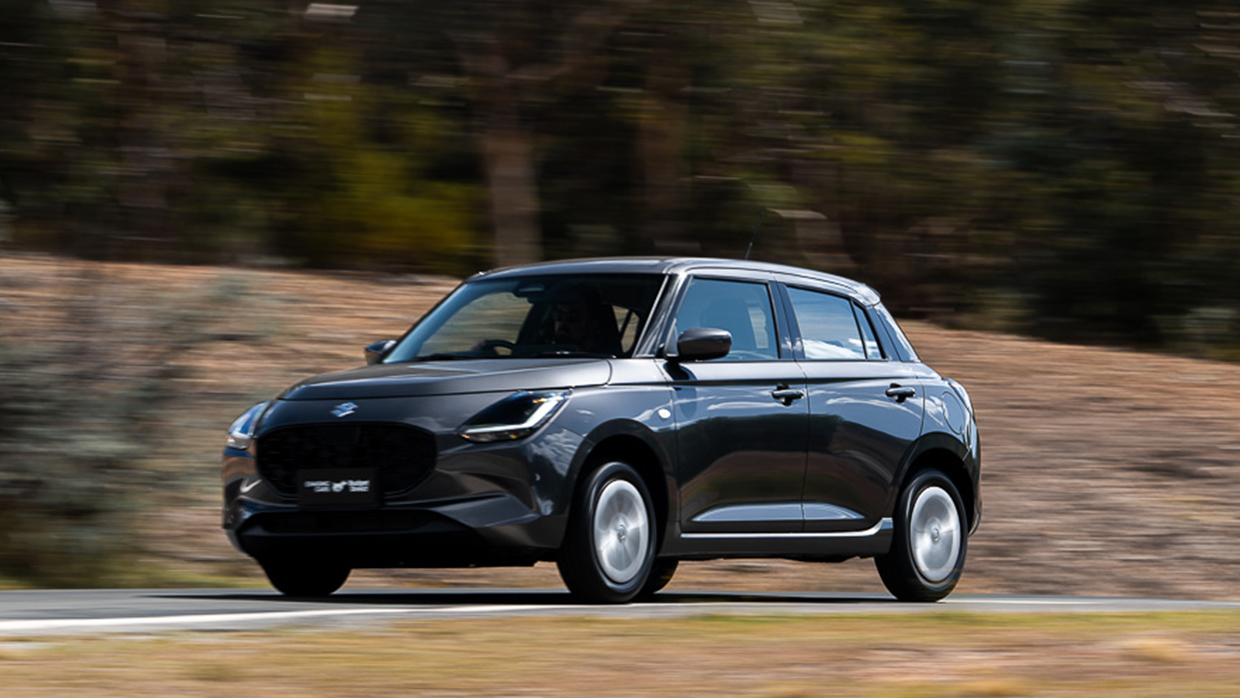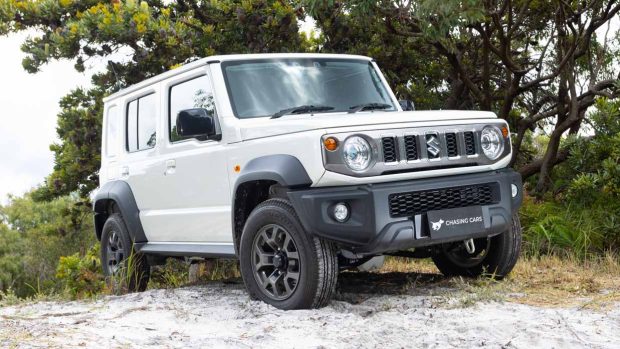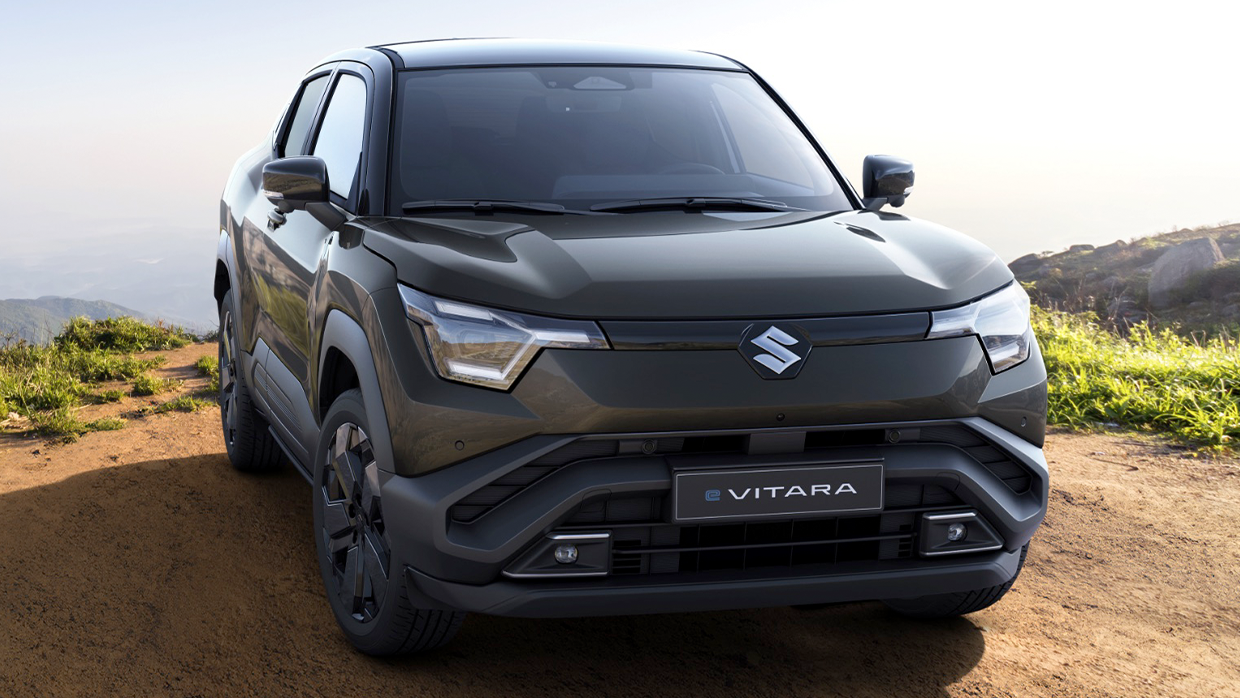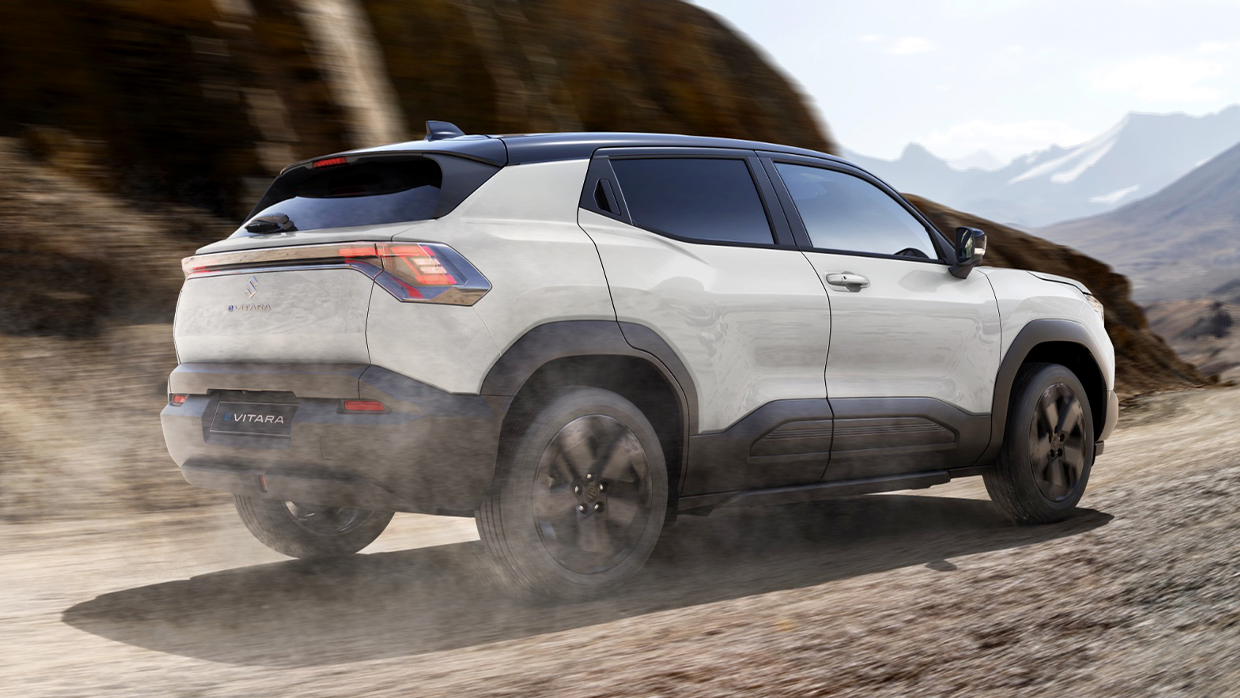-
Car Reviews
- All reviews
- Midsize SUVs
- Small cars
- Utes
- Small SUVs
- Large SUVs
- Large cars
- Sports SUVs
- Sports cars
- Vans
Latest reviews
- Car News
-
Car Comparisons
Latest comparisons
- Chasing Deals
Strict emissions laws will clamp down on Suzuki’s ability to sell the Jimny profitably in Australia, but selling EVs will create breathing room
High demand for the Suzuki Jimny in Australia has led the Japanese manufacturer to develop solutions to keep the compact four-wheel drive available to Aussies despite strict emissions regulations that make the Jimny costly to sell.
Key to the plan will be selling more units of the Swift mild hybrid, which falls below emissions limits, while dialling up sales of the Fronx mild hybrid that stems—but does not stop—the bleeding.
In addition, the Vitara small SUV model has a big new role to play in 2026 with zero-emission fully electric and lower-emission mild-hybrid versions on their way to Australia.
The pair of Vitaras will be more expensive than outgoing versions ($29,990-$41,490 before on-roads) but Suzuki will be heavily incentivised to make the electric version appeal on price.
Confirmed for release in Q1 2026 (between January and March), the Vitara hybrid and eVitara BEV will land with an updated three-door Jimny, temporarily discontinued in early 2025 for a mandatory safety upgrade.
The Vitara (also on hiatus for an autonomous emergency braking upgrade) will replace the existing petrol versions with a 1.5-litre ‘Dualjet’ mild hybrid in which a 25kW/60Nm electric motor supplements the four-cylinder engine for 85kW of combined power.
With a 0-100km/h time in the 12-13 second range, the mild hybrid is slower and has a smaller boot due to its 140-volt battery—but it will slash fuel use and CO2 emissions while retaining front-wheel drive (FWD) and all-wheel drive (AWD) options.
Pricing is expected to start around $35,000 before on-road costs for the mild hybrid while the faster eVitara BEV may commence below $50,000.
Under the skin, the eVitara is a completely different, newer car. Built in India, the BEV offers a choice of 49kWh or 61kWh batteries, the latter providing FWD/AWD options, with WLTP range between 344-428km. At 4275mm long, it’s bigger than the ‘old’ Vitara.
Power ranges between 106kW (49kWh FWD) and 135kW (61kWh AWD), promising far sharper performance than the Vitara mild hybrid, with the BEV promising 0-100km/h times of between 7.4-8.7 seconds.
But while the eVitara is quite small by modern SUV standards, at 1799kg-plus, it is much heavier than the circa-1250kg mild hybrid.
Suzuki expects the Vitara mild hybrid and eVitara BEV pairing to hit customer expectations of “quality, efficiency and reliability”, but they play an outsized role in offsetting the Jimny’s CO2 emissions.
Unlike heavy-duty 4WDs like the Toyota Land Cruiser and Nissan Patrol, the Suzuki Jimny does not qualify for Australia’s more lenient New Vehicle Emissions Standard (NVES) emissions category for rugged off-roaders.
Instead, the Jimny is lumped in with regular cars and SUVs under NVES, which fines carmakers for exceeding CO2 limits. To qualify for the ‘easier’ ute/4WD category, a vehicle must have a ladder-frame chassis (as Jimny does) and towing of more than 3000kg (Jimny tows just 1300kg).
“NVES is tricky, and a strange way of doing things,” Suzuki Australia general manager Michael Pachota told Chasing Cars.
“There is a weight category in there to try to favour products the industry says customers need…so we’re seeing a lot of pick-ups and larger SUVs (favoured).”
With official CO2 emissions between 146-158g/km, the Jimny is already over its 2025 NVES limit of 141/gkm, and it only gets harder from here, dropping to 117g/km in 2026.
If Suzuki fails to offset the Jimny by selling enough EVs and hybrids, it would be fined approximately $2900 per Jimny sold in 2026. If sales stuck at 2023 levels (9697 Jimnys), the total penalty for that model would be nearly $28 million.
“The government will now be penalising [Jimny buyers] with an additional tax, basically,” Pachota said.
Suzuki’s solution? Increasing its mix of low-CO2 models to balance the books. That includes the eVitata (0g/km), Swift hybrid (90g/km), Fronx (113g/km), and the Vitara mild hybrid (estimated 125g/km).
With low-CO2 models likely to account for about 60 percent of Suzuki’s volume, this should be enough to approach NVES break-even and therefore justify keeping the Jimny on sale.
It may be the case that Suzuki needs to limit supply of the Jimny to Australian customers to avoid making its brand-average CO2 too high, or its price may have to be increased from $30,490-37,490 (plus on-road costs) in order to pass on NVES penalty costs to buyers.
For petrol, diesel and hybrid cars, NVES oddly penalises lighter vehicles more than heavier ones because the “headline” CO2 limit flexes upward for upward, allowing more CO2 as kerb weight approaches 2200kg and up while forcing less CO2 as weight drops to 1500kg or less.
Because Suzuki’s combustion and hybrid cars are lighter than 1500kg, they face the hardest possible limits—which in 2026 is not the “headline” number of 117g/km but actually 102g/km.
That means the Vitara mild hybrid (125g/km est) and Fronx (113/gkm) are above the limit, leaving the Swift (90g/km) and eVitara BEV (0g/km) to carry the team from an NVES perspective.
The Fronx and Vitara mild hybrid, which are just above the 2026 limit, only stem the bleeding compared to the vehicles they have replaced.
Expect to see Suzuki lean into the Swift and eVitara as it works on securing even lower-CO2 versions of its other models.
“Suzuki definitely wants to comply,” Pachota told Chasing Cars. “We’ve got a head start with low-emissions vehicles…especially with our hybrid technology, albeit more limited hybrid production at the moment.”
Given the hybrids don’t go far enough on CO2 reduction from 2026 onward might mean the eVitara BEV lands in Australia with particularly attractive pricing.
“Where the eVitara will sit amongst its competitors [pricewise] will be reasonable,” Pachota said. “It will definitely be in a position to be able to justify.”
Latest news
About Chasing cars
Chasing Cars reviews are 100% independent.
Because we are powered by Budget Direct Insurance, we don’t receive advertising or sales revenue from car manufacturers.
We’re truly independent – giving you Australia’s best car reviews.
